ARTICLE AD BOX
Pope Francis has continued to break with traditions even in death, having requested before he died several changes to the ceremony and burial that accompany the passing of a pontiff.
But other rituals will follow ancient traditions, the Vatican announced. More than 50,000 people have already filed through St Peter’s Basilica to pay their final respects to Pope Francis in just the first 12 hours of public viewing.
Vast crowds will gather for Saturday’s funeral, as well as more than 130 foreign dignitaries, among them 50 heads of state and 10 reigning sovereigns.
They include US president Donald Trump and first lady Melania Trump, Ukrainian leader Volodymyr Zelensky and first lady Olena Zelenska, the Prince of Wales, prime minister Sir Keir Starmer, French president Emmanuel Macron and Spain's King Felipe VI, as well as the most highly ranked members of the Catholic Church.
Below we look at how the service will unfold.
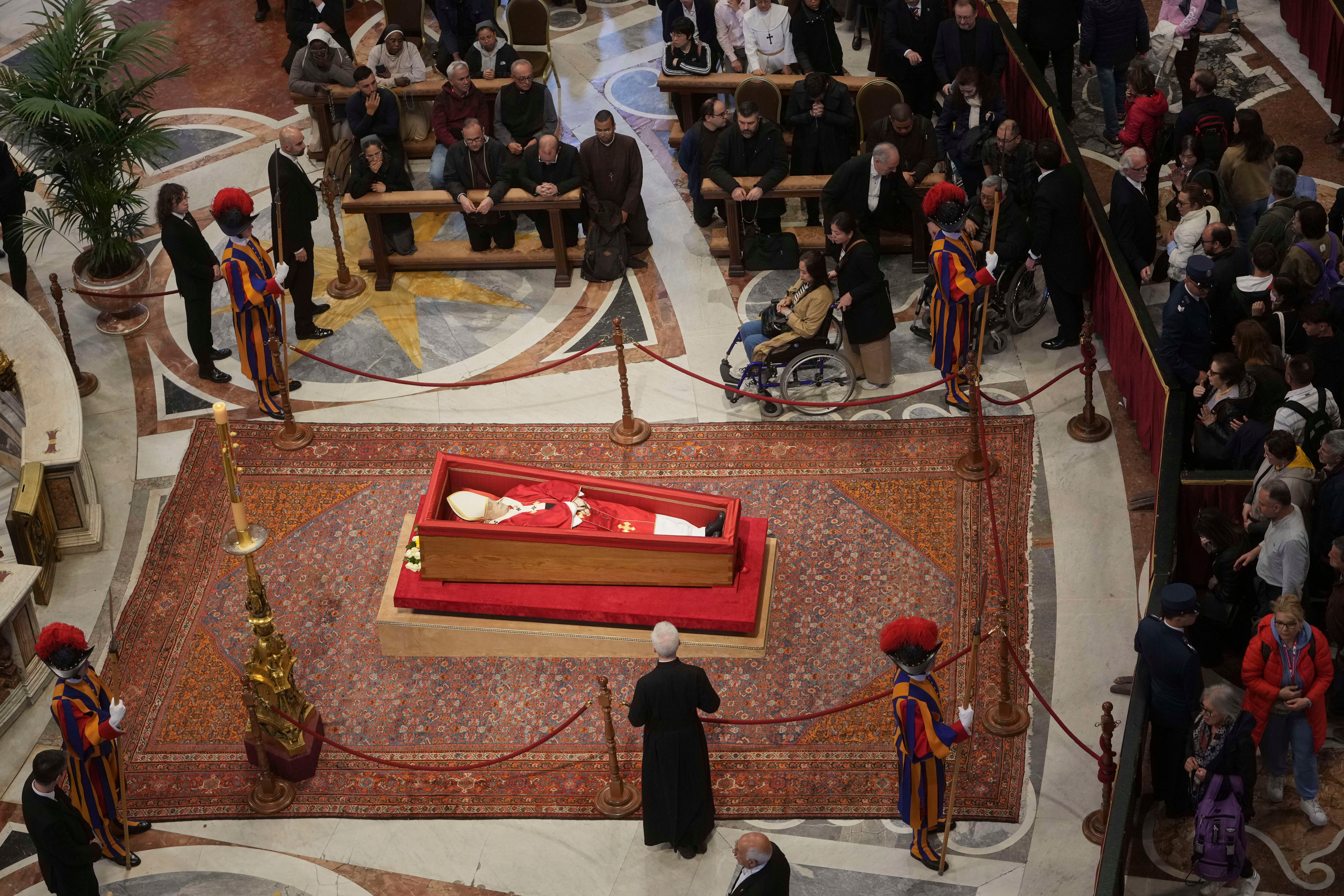
Sealing of the coffin
Pope Francis’s coffin will be sealed in a ritual on Friday evening, marking the end of the three days of public viewing in St Peter’s Basilica.
This will be conducted by American Cardinal Kevin Farrell, a trusted aide to Pope Francis and the current camerlengo - the official who runs the Holy See between the death or resignation of a pope and the election of the next one.
In one break from tradition, Pope Francis eschewed the previous three coffins made of cypress, lead and oak and will be interred in a simplified zinc coffin, inside a wooden casket.
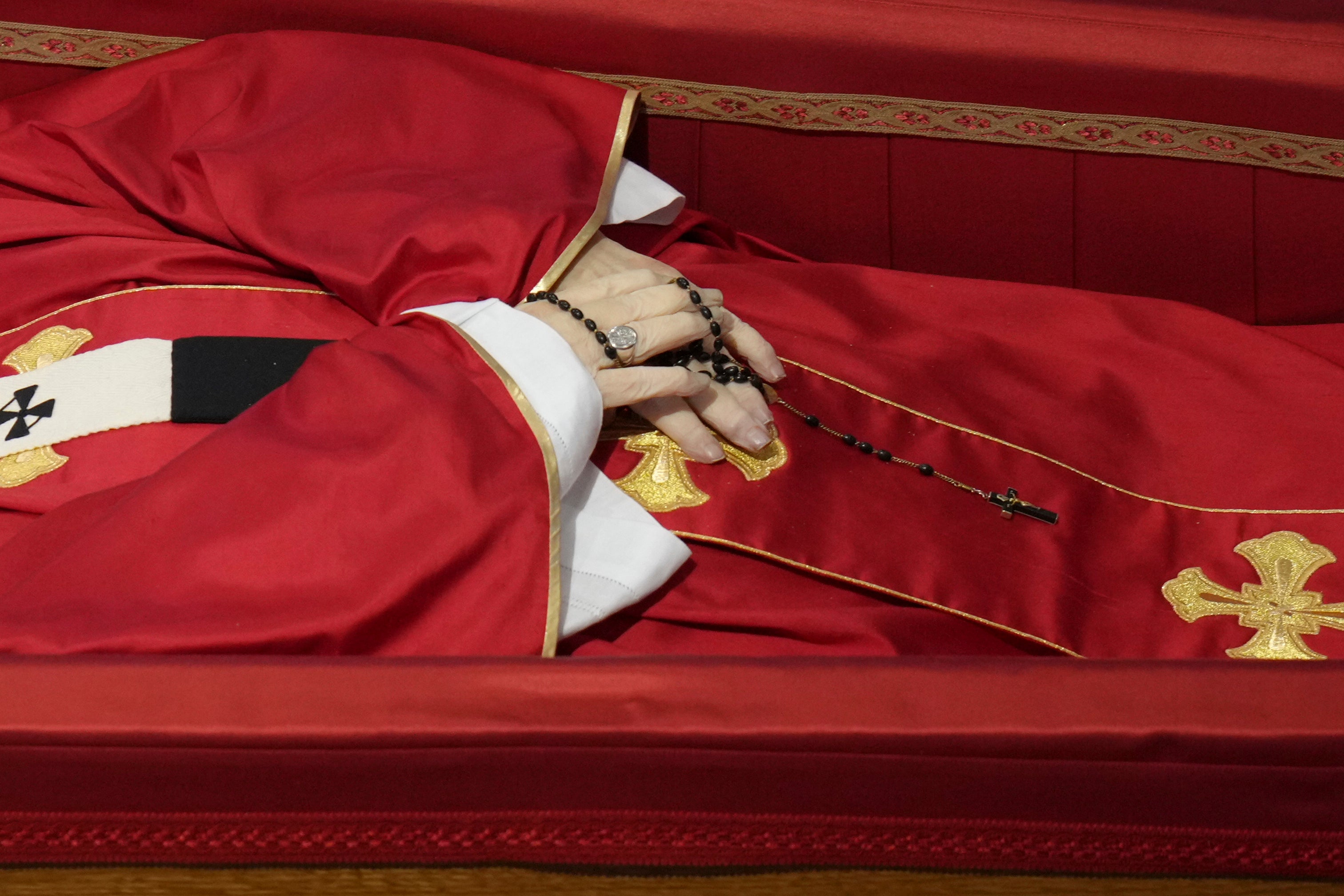
The tomb is being prepared behind a wooden barrier within the basilica that he chose to be near an icon of the Madonna that he revered and often prayed before.
Photos released by the Vatican on Friday show the marble tombstone flat against the pavement, with the simple engraving in Latin that he requested in his last testament: "Franciscus".
A bag of coins minted during Francis’s time as pope is placed in the coffin, along with a one-page account of his papacy. That account is read aloud by the master of liturgical ceremonies before being rolled up into a tube that is put in the coffin.
Senior members of the Catholic Church will attend the ceremony, as well as the late Pope’s secretaries, Vatican News reports.
One ancient ritual already carried out was the breaking of the pope's "Fisherman's Ring" and lead seal so they cannot be used by anyone else.
The funeral service
The funeral itself will take place in St Peter’s Square, in front of the Basilica where his body has been lying in state.
The funeral mass will begin at 10am local time (9am BST). His Reverend Eminence Cardinal Giovanni Battista Re, the dean of the College of Cardinals, will preside over the ceremony.
The presence of world leaders and hundreds of thousands of mourners creates a logistical and security challenge for the Italian authorities.
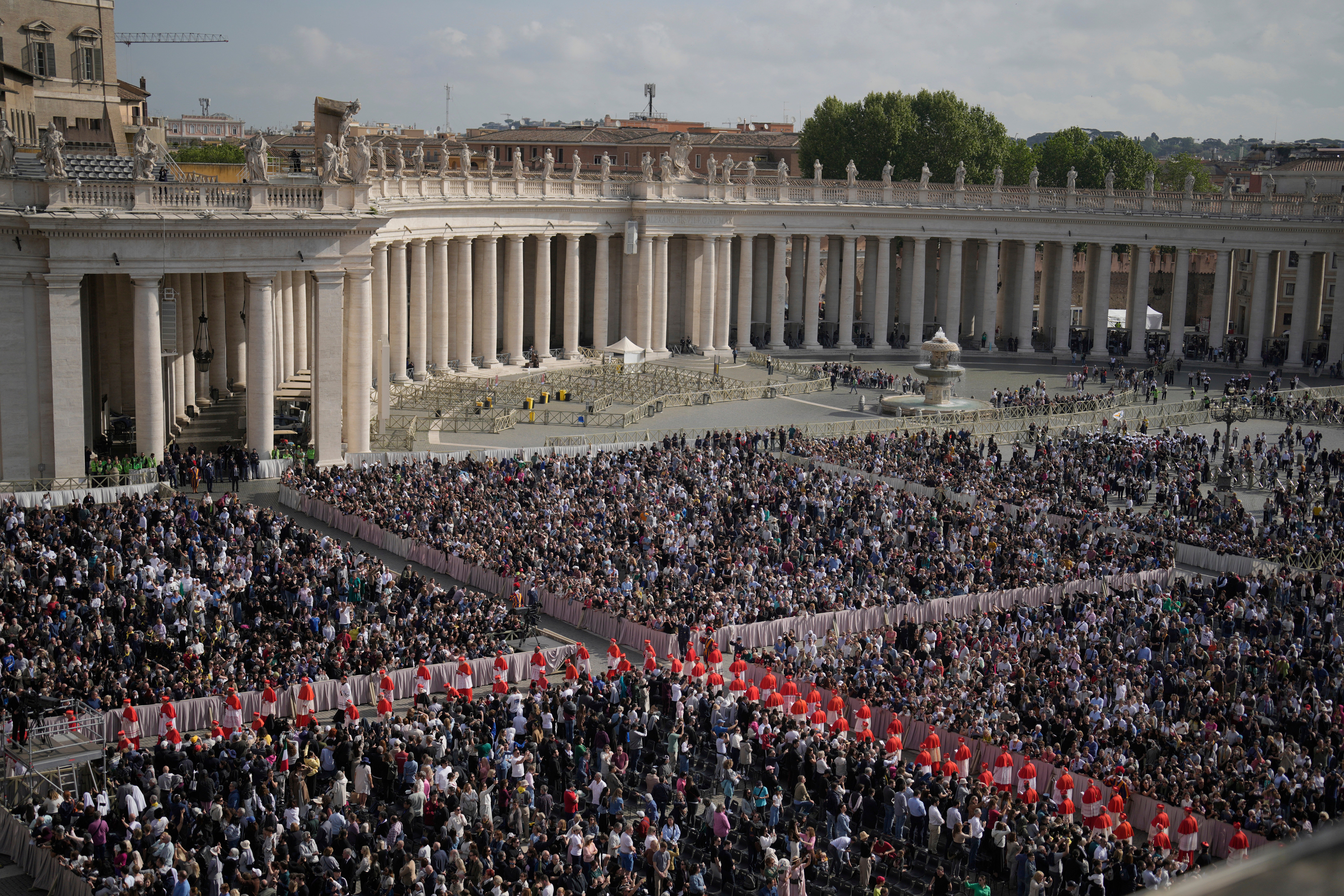
Security around the Vatican has been tightened ahead of Saturday, with Italian authorities adding drones to foot and horse patrols along routes to St Peter’s Square.
The prefect of Rome, Lamberto Giannini, told a news conference on Thursday "I believe that the 'security machine' is ready," but will remain flexible and "ready to reshape and above all transmit a sense of serenity."
Security is not the only consideration. Italian news outlet Corriere della Sera reports a special waste taskforce of 400 staff and 150 vehicles to maintain public cleanliness in the square has already been organised, and pharmacy opening hours have been extended through Rome to boost available medical services.
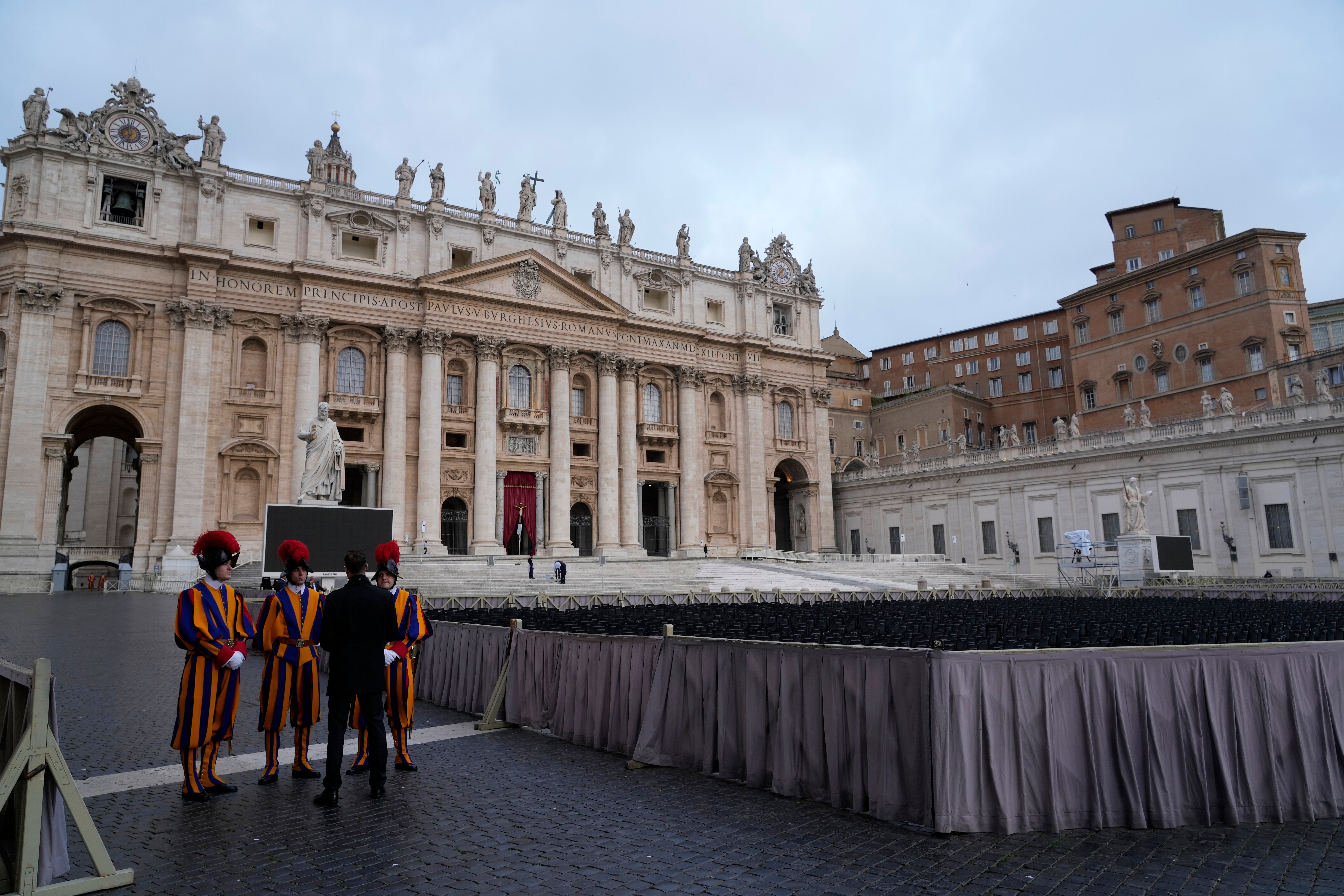
The funeral procession and burial
Following the funeral, in another break with tradition, the coffin will be taken through the streets of Rome to an underground tomb in the basilica of Saint Mary Major, as per his instructions. The procession will be at walking pace to allow people to bid farewell to the pope on his final journey.
But that will not be Pope Francis’s final resting place. The largest break from tradition was the Pope’s request to be buried outside the Vatican grounds, the first pope to do so in 120 years.
Instead, he will be interred at the Basilica of Saint Mary Major (Santa Maria Maggiore) in Rome, which is about 4km from St Peter’s Basilica and which houses the bodies of seven earlier popes.
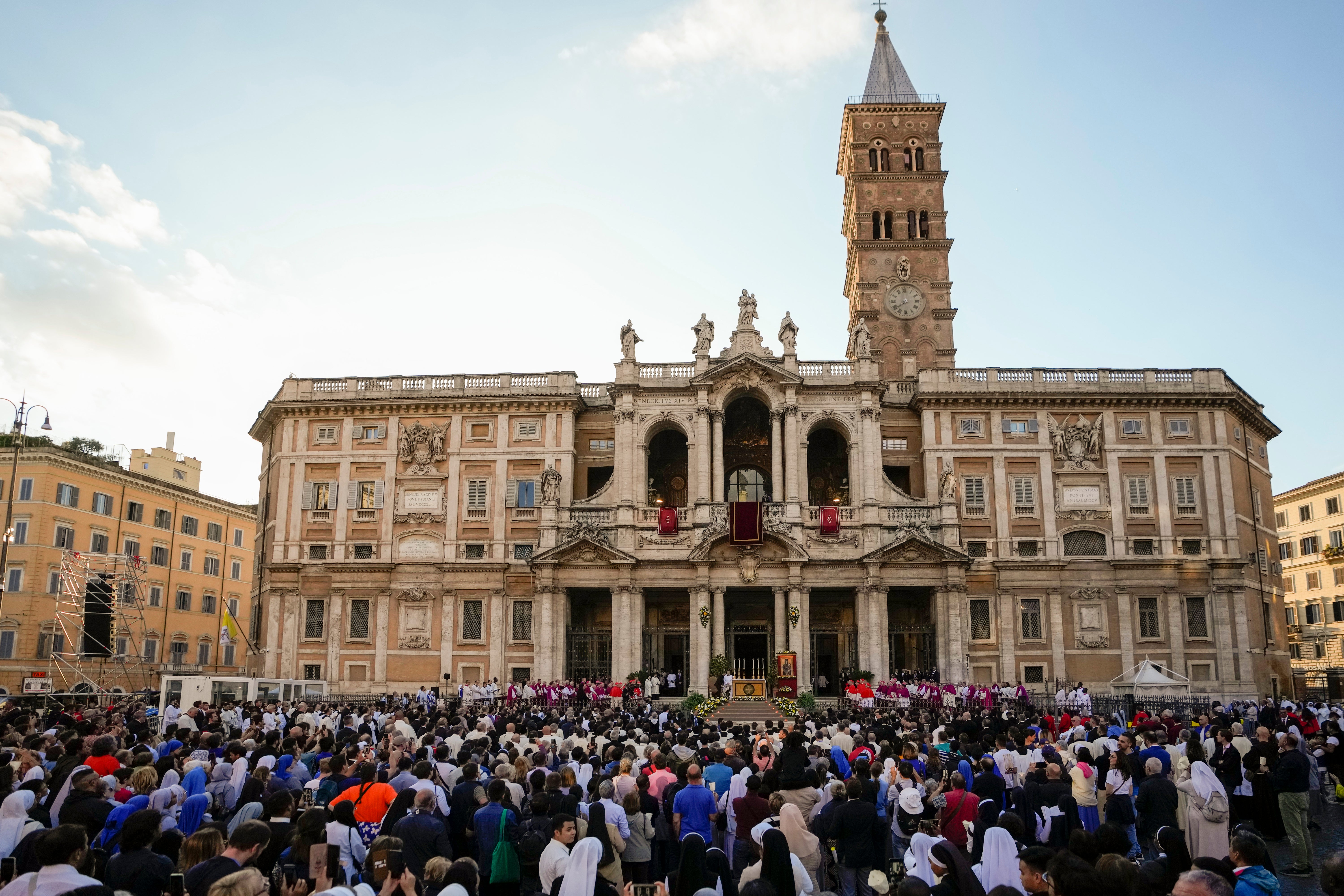
Cardinal Vincent Nichols, the leader of Catholics in England and Wales, said the open-air procession through the Italian capital would “enlarge the stage on which this is played out, and will give the people of Rome, especially, something that they will appreciate very deeply”.
The Vatican said that because the disadvantaged had a special place in the heart of Pope Francis, a group will wait on the steps of Saint Mary Major to pay their last respects before he is buried.
While the funeral mass and procession to Santa Maria Maggiore will be broadcast live around the world, that will end at the basilica.
Corriere reports the burial will be a private ceremony, but people will be able to visit his burial place from Sunday morning.
In his will, Francis stipulated a simple burial "in the earth, without particular decoration", marked only with his papal name in Latin: Franciscus.
Italian news outlet Corriere reports the stone used for the epitaph is marble from the north-west Italian region of Liguria.
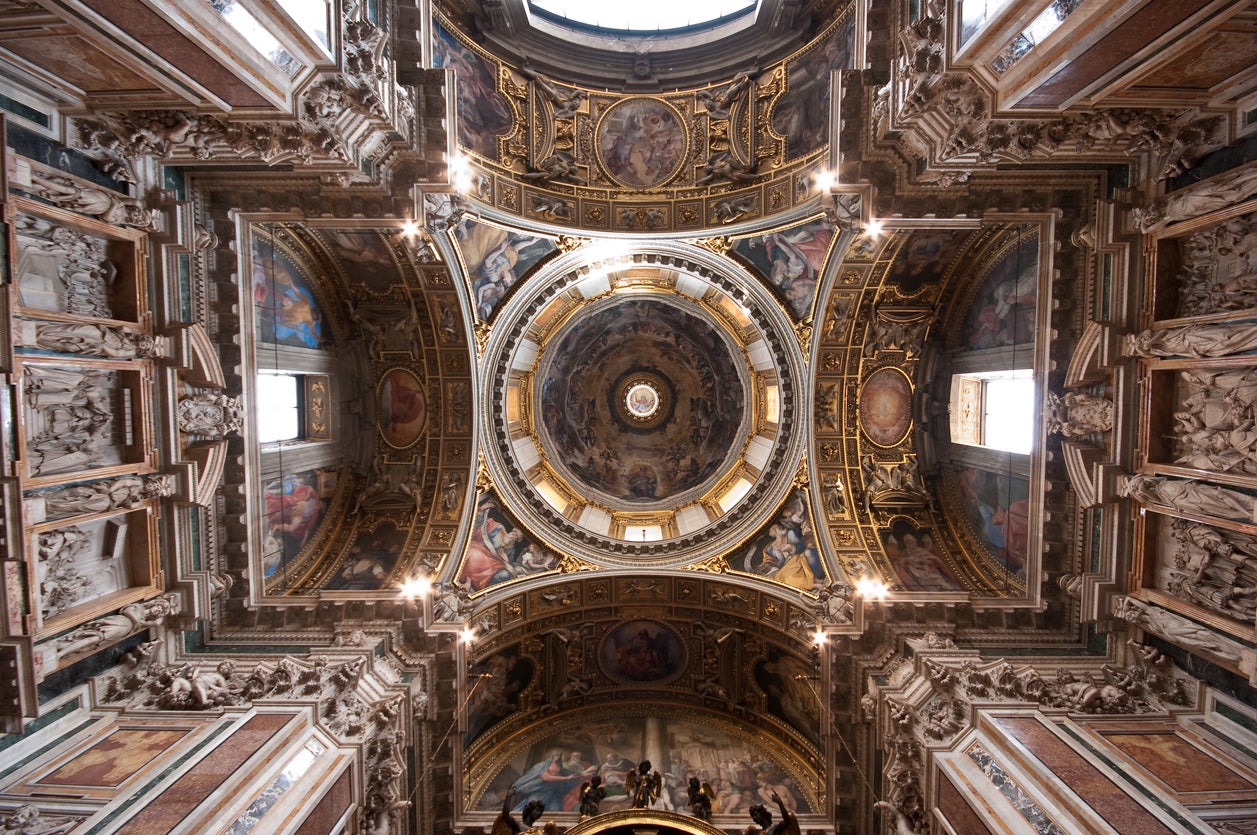
Nine days of mourning
Alongside the funeral on Saturday, nine days of mourning called the “novendiali” will also begin.
While the funeral mass is open to the public, services on the other eight days are open to different groups including one for employees and the faithful of Vatican City.
The last day of mourning is Sunday, May 4, ending with a service at 5pm.
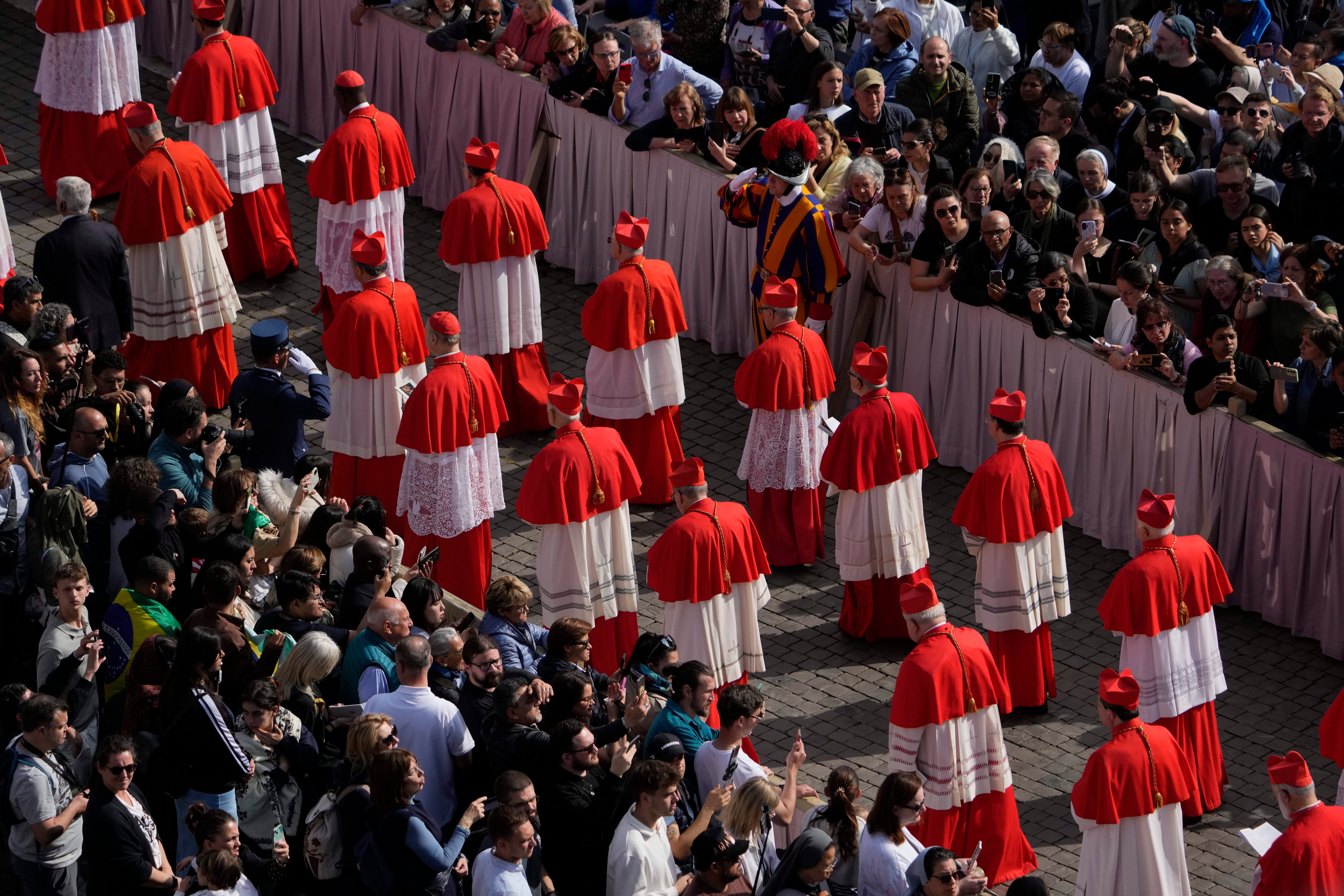
The process of selecting a new pope in a Conclave can begin
From May 5, the conclave to elect a new pope can begin.
In the conclave, the 133 cardinals of voting age (two cannot make it to Rome for health reasons) will gather inside Michelangelo's exquisitely frescoed ceiling of the Sistine Chapel – home of all the Papal Conclaves since 1858, where they will whittle down candidates through successive rounds of voting.
An exact date for this will be decided after the funeral. French Cardinal Jean-Paul Vesco, arriving for the cardinals' meeting on Thursday, said they were not meeting for the conclave yet.
“For the moment I do not believe the cardinals are saying 'who will be the next?'. For the moment we are here completely for Francis."
The conclave is secretive. The cardinals are forbidden from communicating with the outside world, and the gathering begins and ends with ritual words in Latin: “Extra omnes" or “Everyone out", expelling all but voting cardinals. A two-thirds majority is required to become pope, and after the ballot, the victorious cardinal utters, “Accepto” or “I accept”.
With additional reporting from Associated Press









 English (US) ·
English (US) ·